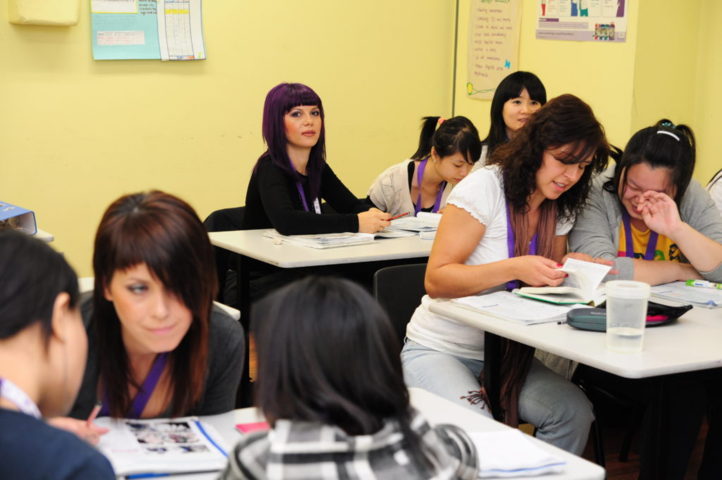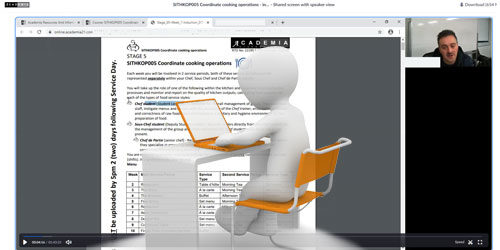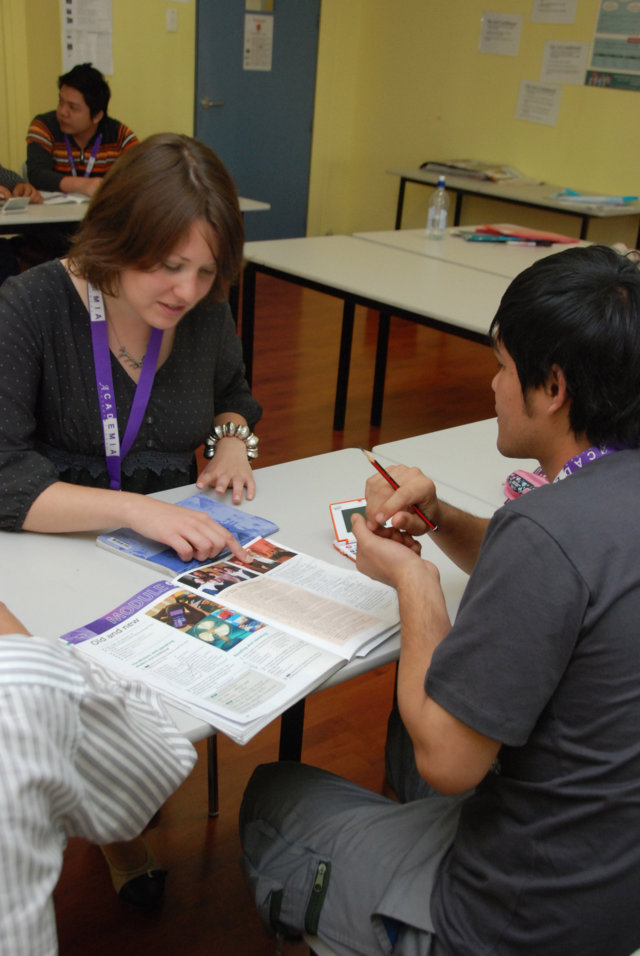Understand basic grammar before you study English in Australia

When you decide to study English in Australia, you may notice that there are a lot of inconsistencies and strange quirks in the English language.
One of those things is English grammar.
Are you interested in learning English? Or do you already have a basic understanding, but are now eager to familiarise yourself with the nuances and grammar rules of the language? Then keep on reading!
Study English in Australia!
Want to study English in Australia? Explore Academia’s school of English for International Students to discover the English courses in Melbourne we offer.
Want to know more? Contact us today – our course advisors are happy to help!
What you need to know before you study English in Australia
The importance of grammar
Nowadays, many of our students pick up English basics not only in the classroom, but through movies, TV and the internet, too.
Many of our students credit English-language movies and internet forums with introducing them to the language. However, these are environments where not everyone will be following proper grammar rules.
While minor grammar mistakes won’t have a big impact in daily life, if you are studying English as part of a university application or for the IELTS, you’ll need a thorough understanding of grammar rules.
Before you begin your English classes, Academia will be giving you a quick lesson in some of the details of English grammar.
Nouns, adjectives and verbs
The first thing you need to know is that every word has a “category” of sorts.
These three categories are crucial, as almost every other grammar rule assumes you know what makes them different, and how to use them properly.
Sometimes categories will have subcategories which further refine the type of word.
When your first starting out however, the only categories you need to remember are the three main ones: nouns, adjectives and verbs.
1) Nouns
Basically, a noun is a word that refers to the name of something:
- Person – Marilyn Monroe
- Animal – rabbit
- Place – Australia
- Thing or object – desk
Essentially, nouns are any sort of “thing”.
However there are certain circumstances in which a noun can be defined as something other than a person, animal, place or thing.
For example, seasons, days of the week, and months are also nouns.
- Seasons, like summer or winter
- Months of the year, like April or December
- Days of week, like Tuesday or Sunday
It’s also important that you know about proper nouns.
Essentially, proper nouns refer to something specific: a person, location, landmark, or brand.
If it’s a formal or official name, it’s a proper noun:
- John Smith
- Melbourne
- Eiffel Tower
- Mercedes-Benz
And since it’s a proper noun, you will also need to capitalise it!
2) Adjectives
An adjective refers to words used to describe something about a noun (or a verb – more on those below).
There are so many ways things can be described:
- By colour: the blue sky
- By speed: the quick fox
- By height: the tall basketball player
- By size: the tiny baby
- By feel or touch: the rough ground
- By temperature: the cold night
Notice how in the above examples, the adjective comes before the noun? Its purpose is to describe the noun that follows it.
3) Verbs
Verbs are words that refer to actions – we commonly refer to them as “doing” words, as they’re used when you do something.
Verbs are usually pretty easy to identify thanks to the fact they end in ‘ing’.
- Sitting
- Eating
- Mixing
- Swimming
- Sleeping
- Thinking
See if you spot the nouns, verbs and adjectives in each of these sentences:
“Harry was running quickly to school.”
“Australia is a beautiful place for exploring.”
(See answers at the end of this post!)
Another thing to look out for are adverbs. Think of these as “mini” verbs that add extra information about an action – the verb. For example:
“She quietly closed the door.”
In this case, “closed” is the verb, as it’s the main action, while “quietly” is the adverb, as it describes the verb – it tells us how the door was closed.
Punctuation
Quotation marks
Traditionally, quotation marks are a way of signalling in written text that somebody is talking.
Quotation marks are also known as quote or talking marks, and are made up of pairs: the first one goes at the start of the spoken words, while the second appears when the person finishes talking.
- “Do you want to bring a friend along to the party?” Sally said.
- “I’d love to go to dinner on Sunday night,” said Peter.
Sometimes, quotation marks can be made up of a single mark at the open and the close of spoken words:
- ‘Do you want to study with me this afternoon?’ asked Jane.
- ‘Have you seen that new foreign language film?’ asked Sam.
Both double or single quotation marks are correct, so choose one style and stick to it to ensure consistency.
This will also help when quoting within spoken quotes. For example, in the sentence below, we have used double quotation marks to signal someone speaking, while single quotation marks within the speech are used to quote within a quote.
“Do you understand what our lecturer meant about ‘specific grammar rules’ in class today?” asked Tom.
What the lecturer said in class (something about specific grammar rules) has been quoted within Tom’s sentence, and is clearly identifiable by the use of single quotation marks.
Commas
Commas are one of the most basic parts of punctuation, alongside full stops. They’re likely one of the first things you learned.
A comma is used when there is a pause in a sentence.
- Good comma use: “I bought apples, oranges, potatoes, and carrots from the supermarkets.”
One common mistake we see is people placing commas between the subject of a sentence and the verb.
- Poor comma use: My mother, loves to go running.
- Good sentence: My mother loves to go running.
A lot of make this mistake because they naturally pause when they say “my mother”, so they think they are meant to add a comma here.
By putting a comma after the subject however, the sentence stops making sense!
Another thing to look out for is the Oxford comma.
Similarly, the Oxford comma is not required, and using it is a personal choice. Again, just ensure you’re consistent.
It is often used to avoid slight confusion, illustrated in the example below:
“I love my parents, Harry Potter, and the Queen.”
Compare this to: “I love my parents, Harry Potter and the Queen.”
What’s the difference?
Without the Oxford comma, the second sentence could sound like your parents are Harry Potter and the Queen! In the first sentence, the comma clearly separates the three people that this speaker is particularly fond of.
Looking to study English in Australia? Choose Academia!
Academia offers high quality NEAS-endorsed English courses in Melbourne.
Our English courses are designed to suit students at each stage of learning:
We are dedicated to providing English courses for all skill levels, no matter what your goal is.
Whether you’re new to the language or simply need to want to improve your English for education purposes, we can help.
If you want to study English in Australia with Academia, contact us today for more information!
Alternatively, click here to contact us online!
Answers:
Harry was running quickly to school.
- Harry is the (proper) noun – a person, place, or thing
- Running is the verb – a “doing” word ending in “-ing”
- Quickly is the adjective – used to describe the action of the verb
Australia is a beautiful place for exploring.
- Australia is the (proper) noun – a person place or thing
- Exploring is the verb – a “doing” word ending in “-ing”
- Beautiful is the adjective – describing the noun “place”






